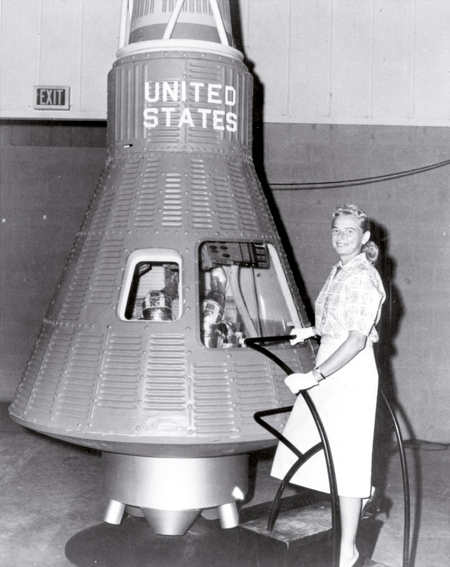
- Cape Canaveral (United States) 20 February 1962. They launched the Mercury-Atlas-6 rocket, which brought astronaut John Glenn into space inside the Friendship 7 capsule. He made three orbits around the Earth and was the first American to get the feat; the Soviets Yuri Gagarin and Gherman Titov did it last year.

Hidden Figures has just told us that the calculations of several black women were fundamental to the success of the mission. But they weren't the only women who fought hidden in space. NASA began in 1959 to train seven men to become an astronaut, who were communicated to them in Mercury Seven. But the program researcher, William Randolph Lovelace II.ak, thought that women could be more suitable for space travel: being smaller and lighter, less fuel would be needed to send them to space; they also provided long stays in space and women ate less.
Thus, the FLAT (First Trained Astronaut Women) program (later called Mercury 13, but never part of NASA's Mercury program) was officially launched. On the flights, twenty pilots with more than 1,000 hours of experience performed the same tests as seven men and were overcome by thirteen: Myrtle Cagle, Jerrie Cobb, Janet Dietrich, Marion Dietrich, Wally Funk, Sarah Gorelick, Jane Ja-ney Hart, Jean Hixson, Rhea Hurarle, Gene Nora Stumbough, Irene Leverton, Jbernard.
In July 1962, women asked for their official incorporation into the Mercury program. The answer was given by George Low, NASA representative, and astronauts John Glenn and Scott Carpenter at a hearing where women did not qualify for astronauts. They needed the engineering degree and the degree of military jet pilot, but at that time women were banned from studying in Air Force schools and the experience on civilian flights was of no use to them.
John Glenn himself said: “The absence of women in this area is a mirror of our social order.” And he recognized that, despite not having an engineering degree, he had been accepted into the program. The following year, the Soviet Valentina Tereshkova was the first woman to travel to space.